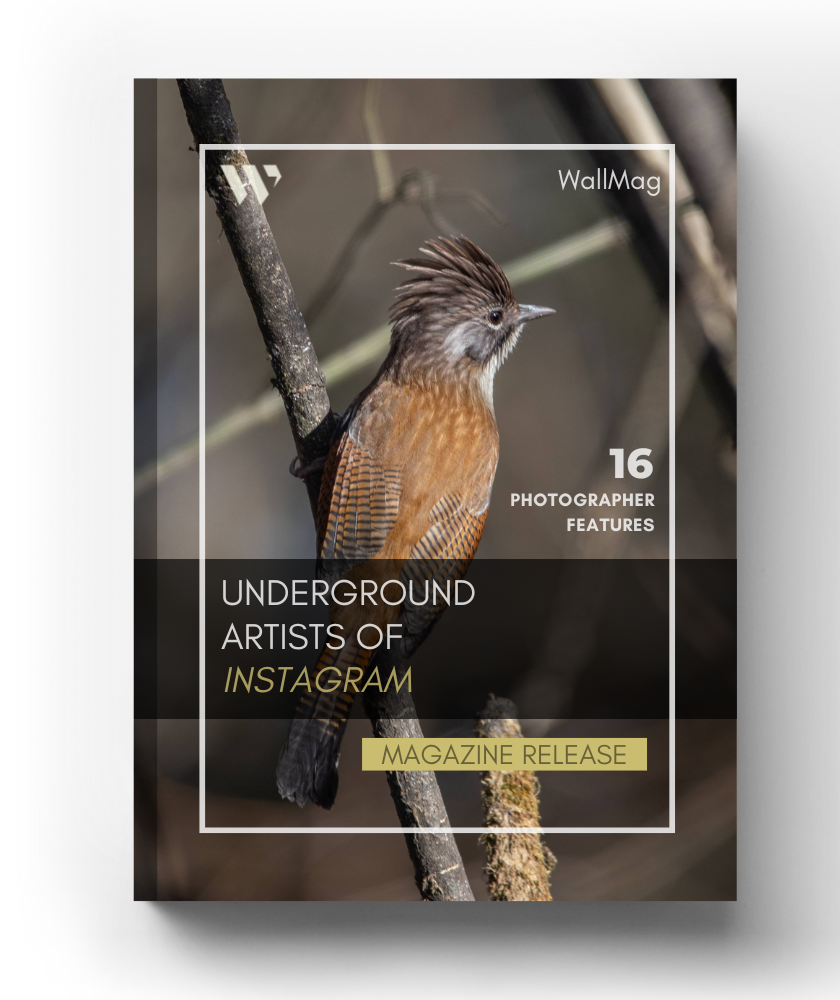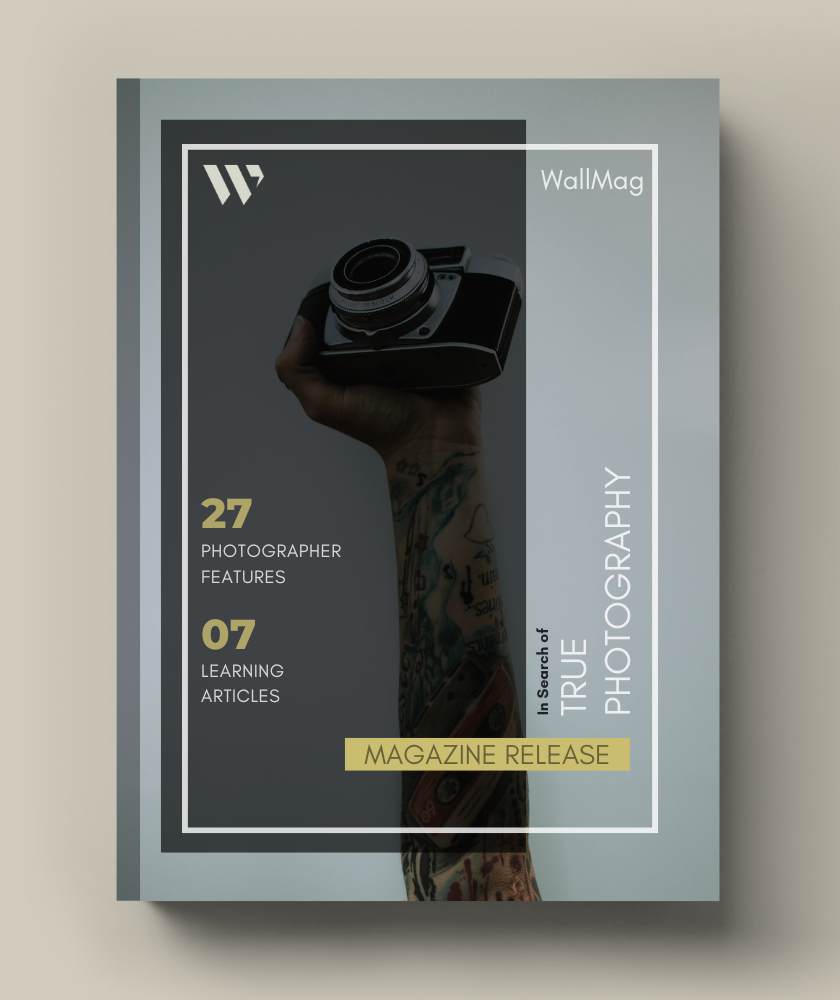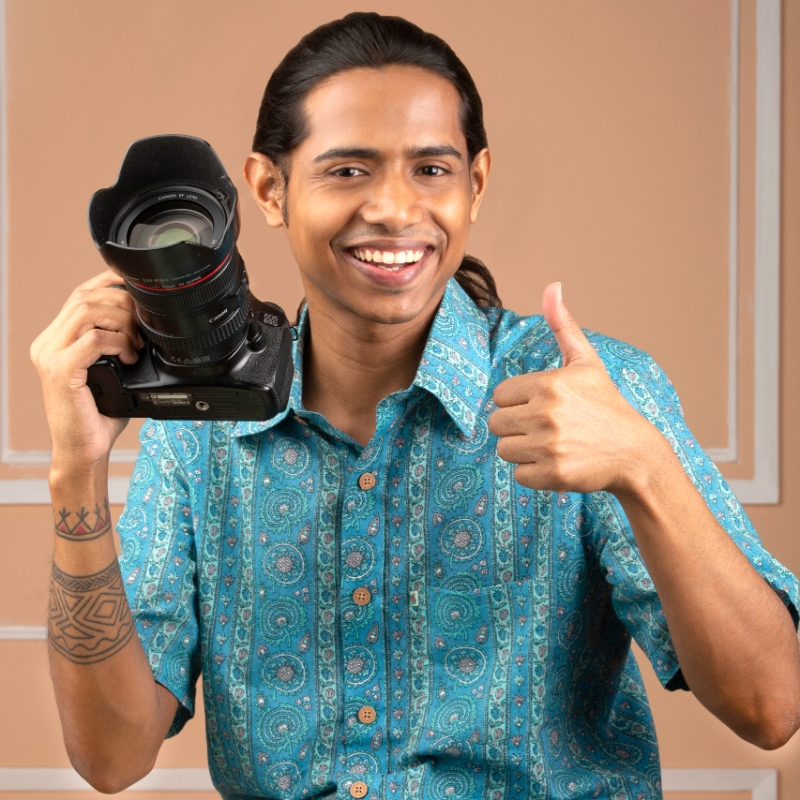WallMag: Tell us where it all began. How did you become a photographer?


I grew up in London, UK. My parents bought me my first camera in 1964 when I was just 11 years old, a Kodak Brownie 127. I became a mildly enthusiastic amateur photographer, and although I enjoyed taking photos, I never really took it that seriously as an amateur.
It was never a big plan of mine to become a professional photographer. I had a successful career in IT But was determined to get out of that industry as early as possible (see next answer for the reasons). In 2002, my family went for a local studio photo session, the photos looked great, but they were expensive. Afterward, I thought, 'Hey, I know about photography, I could do this easily, for far cheaper, and so change careers'.
Little did I know how little I really knew about photography and about running my own business. But I was about to learn!!
WallMag: Why you gave up an IT career to become a professional photographer?

I was 50 years old, I'd lost my enthusiasm for the corporate world, and was getting bored with the IT industry. I had paid off my mortgage at that time, and after having worked as an IT contractor for 23 years, I was financially secure. I knew I wouldn't earn as much money if I became a professional photographer. But, I would have a better quality of life.
You know, it's easy to say 'I wanted to follow my passion' or to say 'It's what I'd always wanted to do in life' but to be honest, it wasn't really like that. Although I loved photography, becoming a professional photographer wasn't a driving passion, but just something that seemed a good idea at the time.
WallMag: How did you discover your style of photography? How would you describe your style?


Yes, this is an interesting question and one that I've given much thought to in the past.
I don't think that a style is necessarily 'discovered' or even deliberately intentioned. I would say that a least at first, a style typically evolves organically without you even realizing it. In my case, the photography styles differed depending on the type of photography I was undertaking.
Studio Portrait Photography
My studio style came about because, I think, of my friendly, casual relationship with customers, along with my development of posing techniques that were gradually becoming more refined. Also, I'd worked out various ways of getting my customers to feel relaxed and happy, which helped enormously with their expressions. So, with studio photography, the style was not about light, composition, or fancy Photoshop techniques, it was more about customer posing and expressions.
You can see examples of this in some of the following photos.
Family Location Sessions
Even though it can be more challenging at times, there's more scope for compositional and lighting creativity in location work than in-studio work. Also, there's less emphasis on poses that are sometimes not appropriate outside(e.g. lying on the ground on top of each which works great in a studio environment not so much outside). So, my style developed with wider, relaxed images, usually showing the context of the portraits. Although I can admire well lit, portrait orientation or square format close up portraits taken by other photographers. I was not very keen on those types of images for my own customers preferring landscape orientation to provide more negative space, selective focusing, context. Allowing the customers to just wander around, and not obviously camera aware. So, my style developed out of those ideas.
Again, you can see examples of this in some of the following photos.
Wedding Photography
My style took a while to evolve with wedding photography but, similarly to my location sessions. I ended up with 99% landscape orientation images, sometimes with plenty of negative space, and very relaxed photographs where the couple and the bridal party were not camera aware. I tended not to take many closeups of guests, etc. that I see from other (mostly beginner) wedding photographers. As to my mind, without showing the context, they could just be portraits taken anywhere.
Also, I started to develop staged 'set-piece' type scenarios, where it appeared to show the couple seemingly unaware of the camera. So my wedding photography style formed from those ideas.
Hobby Photography
For competition images submitted to my camera club, people would say that they could usually tell when one of my images came up on the screen or as a print. I always took great care to light my subjects and to compose carefully. Plus, being a portrait photographer, my images were usually of people rather than landscapes, wildlife or flowers, etc. Also, I believe that the less you light a subject, the more interesting it becomes. So, many of my images were low light portraits, and that's how my 'club photography' style developed.
I discuss 'style' in this 'Portrait Orientation versus Landscape Orientation' comparison video on my 'Creative Portraits' course .
Also, few tips on getting great expressions from your portrait subjects.
WallMag: What is your strength as a photography mentor that helps you to inspire other learning stage photographers?

I am very down to earth and have a fun teaching style. I love to share my photography experience with others, and I've been told it shows. I am aware not to overload students with too much information at a time. That's why many of my videos show one particular tip at a time, with me actually shooting live, rather than long drawn out explanations that go in one ear and out the other.
Something else that I've often been complimented on is that occasionally I leave in mistakes that I've made and openly admit to them. Let's face it, I'm only human, we all make mistakes, and recognizing them is a great way to learn.
WallMag: What according to you, are the most important qualities and skills a true photographer should possess?

Apart from the obvious of being technically proficient with your equipment, the answer to that depends on the type of photography.
For example, as a portrait photographer, it's important to build a relationship with your subjects. But of course, that doesn't apply to say landscape and wildlife photography. As a generalization, it's important to know your gear back to front. So that it becomes second nature and to think carefully about what you're trying to achieve and consider light and composition very carefully.
WallMag: Take us through your photography process. How do you complete your work from start to finish?


I use Lightroom when I have a set of images to process and Photoshop when I want to do something a bit special to an image.
With a set of images, for example, for a studio or location session, I edit down very hard. I don't like to show customers several versions of the same 'scenario' as I feel it diminishes the impact. I just show the very best photos.
Although I love Lightroom and Photoshop, I prefer to get it right in-camera. I don't usually do a huge amount of processing on my images, just the usual, white balance/cropping/levels and curves and vignetting, etc.
WallMag: What advice would you like to give to budding photographers trying to make their career in photography?

It's a very competitive industry, so I would advise, if possible, to run your new photography venture alongside your day job for a while, at least until success starts to come.
Very importantly, being a great photographer is only part of your business. I learned the importance of sales and marketing very quickly. Without customers, there can be no business.
Try and find a niche, create your style, and think very carefully about pricing. Look and see what other photographers are charging for a similar service.
Build a nice website and portfolio, but don't overdo the number of images on your new website. Be ruthless and bold and just publish your very best images, customers don't want to wade through hundreds of photos. (I only showed about 20 images for each of my different product portfolios).
Be professional at all times.
WallMag: In your opinion, how far does the composition matter in photography?

Although it's easy to say that composition is of the utmost importance, it's obviously not true for all types of photography, as sometimes it just doesn't matter. But of course, for creative images learning about, for example, rule-of-thirds, negative space, repeating patterns, diagonal lines, lead-in lines, and field of view is worth far more than a whole bag full of fancy lenses. Those compositional elements, among others, will improve your photos enormously.
The same goes for learning about light.
WallMag: What makes the good picture stand out from the average?


Great light, great composition, great natural relaxed posing, and expressions (if people in the photo). If you can tell a story with those elements, You should have a great picture.
WallMag: Being a photography instructor, how many students have you taught so far?

I published my first course in 2013, it proved successful, so I published a new one nearly every year after that. I now have over 50,000 subscribers to my courses in over 150 countries around the globe.
WallMag: Is there any success story of your student that makes you feel proud of being a photography instructor?

The only real feedback I get from my online students is in the form of reviews, so I don't have any specific success stories about individual students.
However, many students have told me in their reviews about how much my courses have helped them. Also, how their photos have improved tremendously since taking the courses.
I have over 4,000, mostly 4 and 5-star reviews for my courses.
WallMag: Is there anything you would like to share with our readers?

I'd like to finish by saying that you can read books, watch videos, go to workshops and seminars, etc. to improve your photography. However, there is no substitute for practice and to keep learning and practicing. Understanding your mistakes will also lead to eventual improvements. So go out, take lots of photos and have fun enjoying this great hobby of ours.
You can follow Bernie on his Youtube channel to stay updated with his work.
You can also have a look at his Website.








